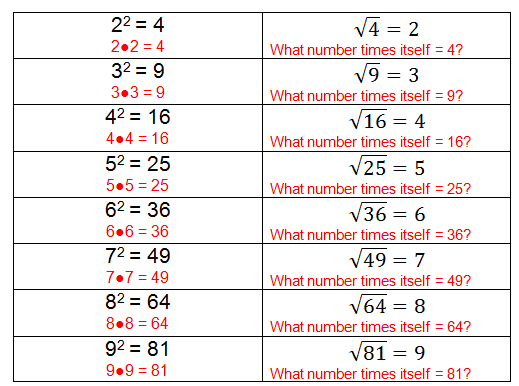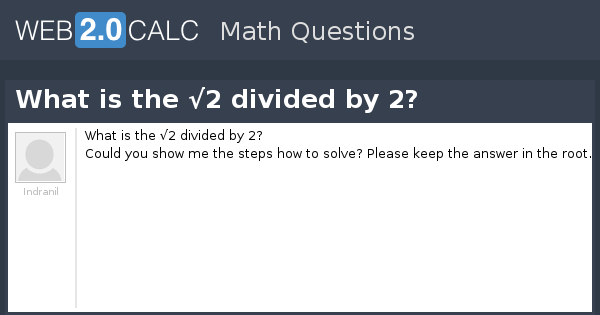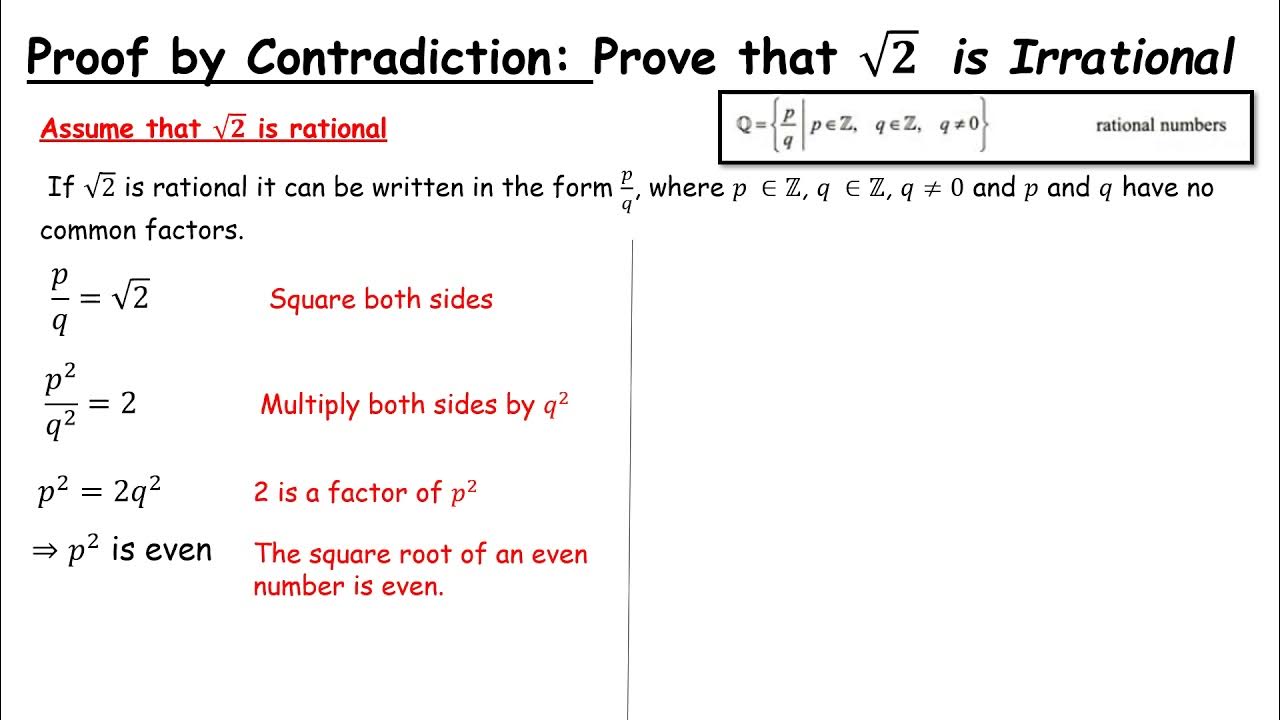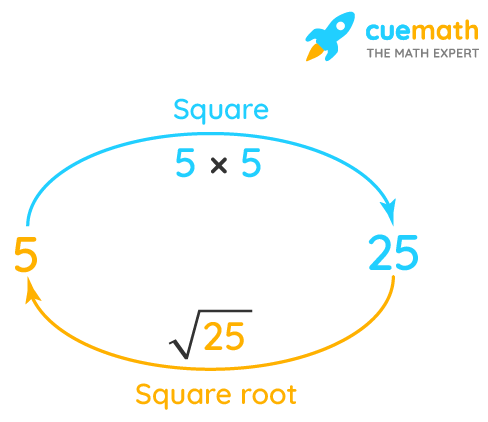Topic is square root of 2 irrational: The square root of 2 has intrigued mathematicians for centuries. In this article, we delve into the nature of this fascinating number, exploring why it is considered irrational. From historical insights to detailed proofs, discover the significance and implications of the irrationality of √2 in mathematics and beyond.
Table of Content
- Is the Square Root of 2 Irrational?
- Introduction
- Definition of Rational and Irrational Numbers
- Historical Background
- Proof of the Irrationality of the Square Root of 2
- Methods of Proof
- Geometric Proof
- Algebraic Proof
- Implications of the Irrationality of √2
- Applications in Mathematics
- Significance in Number Theory
- YOUTUBE:
Is the Square Root of 2 Irrational?
The question of whether the square root of 2 is irrational has a clear and well-established answer: yes, it is irrational. The irrationality of the square root of 2 means that it cannot be expressed as a fraction of two integers. Here's a detailed explanation:
Proof by Contradiction
One of the most common ways to prove that the square root of 2 is irrational is by using a proof by contradiction. This method involves assuming the opposite of what we want to prove and then showing that this assumption leads to a contradiction.
- Assume that √2 is rational. This means that it can be written as a fraction of two integers, say a/b, where a and b are coprime (i.e., they have no common factors other than 1).
- Thus, we can write:
\[\sqrt{2} = \frac{a}{b}\]
- Squaring both sides gives:
\[2 = \frac{a^2}{b^2}\]
- This implies:
\[a^2 = 2b^2\]
- From this equation, we can see that \(a^2\) is even because it is equal to 2 times \(b^2\), which is an integer.
- If \(a^2\) is even, then \(a\) must also be even (since the square of an odd number is odd).
- Therefore, let \(a = 2k\) for some integer k. Substituting this into the equation \(a^2 = 2b^2\) gives:
\[(2k)^2 = 2b^2\]
\[4k^2 = 2b^2\]
\[2k^2 = b^2\]
- This implies that \(b^2\) is also even, and hence \(b\) is even.
- However, this contradicts our initial assumption that a and b are coprime, because if both a and b are even, they have at least 2 as a common factor.
Since our assumption that √2 is rational leads to a contradiction, we must conclude that √2 is irrational.
Conclusion
The square root of 2 cannot be written as a fraction of two integers, and therefore it is an irrational number. This has been proven through a logical contradiction, reinforcing the irrationality of √2.

READ MORE:
Introduction
The question of whether the square root of 2 is irrational has fascinated mathematicians for millennia. An irrational number cannot be expressed as a simple fraction of two integers. The square root of 2, denoted as \( \sqrt{2} \), is one such number, meaning it cannot be written as \( \frac{a}{b} \) where \( a \) and \( b \) are integers with no common factors other than 1.
In this section, we will:
- Define what it means for a number to be rational or irrational.
- Provide a brief historical background on the discovery of the irrationality of \( \sqrt{2} \).
- Outline the various proofs of the irrationality of \( \sqrt{2} \).
- Discuss the implications and significance of the irrationality of \( \sqrt{2} \) in mathematics.
Understanding why \( \sqrt{2} \) is irrational is not just an academic exercise; it has profound implications in number theory and beyond. Join us as we explore the depth of this mathematical marvel.
Definition of Rational and Irrational Numbers
To understand the concept of rational and irrational numbers, we first need to define each term clearly:
- Rational Numbers: A rational number is any number that can be expressed as the quotient or fraction \( \frac{a}{b} \) of two integers, where \( a \) (the numerator) and \( b \) (the denominator) are integers, and \( b \neq 0 \). Rational numbers include integers, fractions, and finite or repeating decimals. For example, \( \frac{1}{2} \), \( -3 \), and \( 0.75 \) are all rational numbers because they can be expressed as \( \frac{1}{2} \), \( \frac{-3}{1} \), and \( \frac{3}{4} \) respectively.
- Irrational Numbers: An irrational number is a number that cannot be expressed as a simple fraction. Irrational numbers have non-terminating, non-repeating decimal expansions. Examples include \( \pi \), \( e \), and \( \sqrt{2} \). These numbers cannot be written as \( \frac{a}{b} \) where \( a \) and \( b \) are integers with no common factors other than 1.
To illustrate the difference, consider the decimal expansions:
- Rational: \( 0.75 = \frac{3}{4} \) is rational because the decimal terminates.
- Irrational: \( \sqrt{2} = 1.414213...\) is irrational because the decimal neither terminates nor repeats.
Mathematically, we can state the following:
- If a number \( x \) is rational, then \( x \) can be written as \( \frac{a}{b} \) with integers \( a \) and \( b \) (where \( b \neq 0 \)).
- If a number \( x \) is irrational, then \( x \) cannot be written as \( \frac{a}{b} \) for any integers \( a \) and \( b \) (where \( b \neq 0 \)).
Understanding these definitions is crucial for grasping why \( \sqrt{2} \), a number that cannot be neatly expressed as a fraction, falls into the category of irrational numbers.
Historical Background
The discovery of the irrationality of the square root of 2 is attributed to the ancient Greeks. It is believed that the first proof was found by the Pythagoreans, a group of mathematicians who followed the teachings of Pythagoras.
The Pythagoreans were initially convinced that all numbers could be expressed as the ratio of two integers, which are known as rational numbers. However, the discovery of the square root of 2 challenged this belief. According to legend, the Pythagorean Hippasus was the first to demonstrate the irrationality of √2. This discovery reportedly caused a crisis among the Pythagoreans, as it contradicted their fundamental belief in the rationality of all numbers.
The proof presented by Hippasus was likely geometric in nature. The Pythagoreans were very interested in geometry, and the concept of incommensurability, where the ratio of the lengths of two line segments cannot be expressed as a fraction, was a significant focus of their studies.
One of the most famous proofs of the irrationality of the square root of 2 is a proof by contradiction, which likely came later. This method involves assuming that √2 is rational and then showing that this assumption leads to a logical contradiction. This type of proof has been widely taught and is a cornerstone in the study of number theory.
Over time, the concept of irrational numbers became more accepted in the mathematical community. The discovery of other irrational numbers, such as the square roots of non-square integers and transcendental numbers like π and e, further expanded the understanding and acceptance of irrationality in mathematics.
The historical significance of the discovery of the irrationality of √2 cannot be overstated. It marked a pivotal moment in the history of mathematics, leading to deeper insights into the nature of numbers and the development of mathematical theory.
Proof of the Irrationality of the Square Root of 2
The irrationality of the square root of 2 is a classic result in mathematics, often proven using a method called proof by contradiction. Here, we will go through the steps of this proof.
Let's assume, for the sake of contradiction, that the square root of 2 is rational. This means it can be expressed as a fraction of two integers \( \frac{a}{b} \) in its simplest form, where \( a \) and \( b \) have no common factors other than 1.
- Assume \( \sqrt{2} = \frac{a}{b} \), where \( a \) and \( b \) are coprime integers.
- Square both sides of the equation:
\[
(\sqrt{2})^2 = \left(\frac{a}{b}\right)^2 \implies 2 = \frac{a^2}{b^2}
\] - Multiply both sides by \( b^2 \) to clear the fraction:
\[
2b^2 = a^2
\] - Since \( 2b^2 = a^2 \), \( a^2 \) must be even (because it is 2 times an integer). Therefore, \( a \) must also be even (since the square of an odd number is odd).
- Let \( a = 2k \) for some integer \( k \). Substituting \( a = 2k \) into the equation \( 2b^2 = a^2 \):
\[
2b^2 = (2k)^2 \implies 2b^2 = 4k^2 \implies b^2 = 2k^2
\] - This implies that \( b^2 \) is also even, and hence \( b \) must be even.
- If both \( a \) and \( b \) are even, they have at least a common factor of 2, which contradicts our initial assumption that \( \frac{a}{b} \) is in simplest form.
This contradiction implies that our initial assumption that \( \sqrt{2} \) is rational is false. Therefore, \( \sqrt{2} \) must be irrational.
This proof elegantly demonstrates the impossibility of expressing the square root of 2 as a ratio of two integers, confirming its irrational nature.

Methods of Proof
There are several methods to prove the irrationality of the square root of 2. The most well-known proofs include:
- Proof by Contradiction
- Geometric Proof
- Proof Using Polynomial Roots
This method begins by assuming that the square root of 2 is rational, meaning it can be expressed as the ratio of two integers, say p/q, where p and q are coprime (i.e., they have no common factors other than 1).
1. Assume \( \sqrt{2} = \frac{p}{q} \).
2. Square both sides: \( 2 = \frac{p^2}{q^2} \).
3. Rearrange the equation: \( 2q^2 = p^2 \).
This implies that \( p^2 \) is even, hence \( p \) must be even (since the square of an odd number is odd).
4. Let \( p = 2k \) for some integer \( k \).
5. Substitute \( p = 2k \) into the equation: \( 2q^2 = (2k)^2 \), which simplifies to \( 2q^2 = 4k^2 \) or \( q^2 = 2k^2 \).
This implies that \( q^2 \) is even, hence \( q \) must be even.
6. Since both \( p \) and \( q \) are even, they have a common factor of 2, which contradicts the assumption that they are coprime.
Therefore, \( \sqrt{2} \) cannot be expressed as \( \frac{p}{q} \), proving that it is irrational.
Geometric proofs often involve concepts from number theory and properties of even and odd numbers. They generally follow similar logical steps as the algebraic proof but provide a visual or geometric interpretation of why \( \sqrt{2} \) cannot be rational.
Consider the polynomial \( x^2 - 2 = 0 \). The Rational Root Theorem states that any rational solution of this polynomial must be a factor of the constant term (±2) divided by the leading coefficient (1). The only possible rational roots are ±1 or ±2, none of which satisfy the equation \( x^2 - 2 = 0 \). Thus, \( \sqrt{2} \) must be irrational.
Each of these methods builds on fundamental properties of numbers and logical deduction to demonstrate that the square root of 2 cannot be expressed as a ratio of two integers.
Geometric Proof
The geometric proof of the irrationality of the square root of 2 is rooted in the properties of isosceles right triangles. Here's a detailed step-by-step proof:
-
Consider an isosceles right triangle with each leg of length 1. According to the Pythagorean theorem, the length of the hypotenuse is \( \sqrt{2} \).
-
Assume, for the sake of contradiction, that \( \sqrt{2} \) is rational. This means we can write \( \sqrt{2} = \frac{a}{b} \) for some integers \( a \) and \( b \) where the fraction is in lowest terms, i.e., \( \text{gcd}(a, b) = 1 \).
-
In this case, we have a larger isosceles right triangle with legs of length \( b \) and hypotenuse \( a \). The Pythagorean theorem gives us:
\( a^2 = b^2 + b^2 \)
\( a^2 = 2b^2 \)
Thus, \( a^2 \) is even, which implies that \( a \) is even.
-
Since \( a \) is even, let \( a = 2k \) for some integer \( k \). Substituting into the equation, we get:
\( (2k)^2 = 2b^2 \)
\( 4k^2 = 2b^2 \)
\( 2k^2 = b^2 \)
This shows that \( b^2 \) is also even, hence \( b \) is even.
-
Since both \( a \) and \( b \) are even, this contradicts our original assumption that \( \frac{a}{b} \) is in the lowest terms, because we could divide both by 2 and obtain a simpler form. This contradiction implies that our initial assumption is false, and hence \( \sqrt{2} \) is irrational.
-
For an alternative geometric argument, consider the construction of a smaller isosceles right triangle within the original one:
- Starting with an isosceles right triangle with legs \( b \) and hypotenuse \( a \), draw a circle with radius \( b \) centered at one vertex.
- Construct a smaller isosceles right triangle inside by extending a perpendicular from the point where the circle intersects the hypotenuse to the opposite leg. This new triangle also has integer side lengths.
- This process generates an infinite sequence of smaller isosceles right triangles, each with integer sides, which is impossible since there cannot be an infinite sequence of decreasing positive integers.
Therefore, the geometric proof, like the algebraic proof, demonstrates that \( \sqrt{2} \) cannot be expressed as a ratio of two integers, affirming its irrationality.
Algebraic Proof
To prove the irrationality of the square root of 2, we can use an algebraic proof that employs the method of contradiction. Here are the steps:
-
Assume that \(\sqrt{2}\) is rational. This means it can be expressed as a fraction \(\frac{p}{q}\) in its simplest form, where \(p\) and \(q\) are integers with no common factors other than 1, and \(q \neq 0\).
-
Express the assumption: \(\sqrt{2} = \frac{p}{q}\).
-
Square both sides of the equation: \(2 = \frac{p^2}{q^2}\).
-
Multiply both sides by \(q^2\) to get rid of the fraction: \(2q^2 = p^2\).
-
This implies that \(p^2\) is even because it is equal to \(2q^2\), which is clearly even.
-
If \(p^2\) is even, then \(p\) must also be even (since the square of an odd number is odd).
-
Since \(p\) is even, we can write \(p\) as \(2k\) for some integer \(k\).
-
Substitute \(p = 2k\) back into the equation \(2q^2 = p^2\):
\(2q^2 = (2k)^2\)
\(2q^2 = 4k^2\)
Divide both sides by 2:
\(q^2 = 2k^2\)
-
This implies that \(q^2\) is even, and therefore \(q\) must also be even.
-
Since both \(p\) and \(q\) are even, they have a common factor of 2. This contradicts our initial assumption that \(\frac{p}{q}\) is in its simplest form.
-
Therefore, the assumption that \(\sqrt{2}\) is rational must be false. Hence, \(\sqrt{2}\) is irrational.
Implications of the Irrationality of √2
The discovery that the square root of 2 is irrational has profound implications in both mathematics and its philosophy. Here are some of the key impacts:
-
Conceptual Shift in Mathematics:
The recognition of √2 as irrational challenged the ancient Greek belief that all numbers are rational, meaning they can be expressed as a fraction of two integers. This discovery led to the development of the concept of irrational numbers, which cannot be expressed as simple fractions. It marked a significant shift in mathematical thinking, broadening the understanding of number systems and leading to the exploration of real numbers.
-
Development of Number Theory:
The proof of the irrationality of √2 is a cornerstone in the field of number theory. It illustrated the necessity to rigorously prove the properties of numbers, fostering a deeper and more systematic study of integers, rational numbers, and irrational numbers.
-
Influence on Mathematical Proof Techniques:
The method used to prove the irrationality of √2, known as proof by contradiction, became a fundamental technique in mathematics. This method involves assuming the opposite of what you want to prove, showing that this assumption leads to a contradiction, and thereby proving that the original statement must be true. This technique is now a standard tool in mathematical proofs.
-
Geometric Interpretations:
The discovery also has geometric implications. In Euclidean geometry, the hypotenuse of a right triangle with both legs of length 1 is √2. This realization not only proved the irrationality of √2 but also connected algebraic concepts with geometric constructs, enhancing the understanding of geometry.
-
Impact on the Philosophy of Mathematics:
Philosophically, the existence of irrational numbers like √2 challenged the notion of mathematical completeness and perfection as understood by the Greeks. It introduced the idea that there are more numbers than can be expressed by simple ratios, prompting further exploration into the nature of numbers and the continuum of the number line.
-
Practical Applications:
In modern times, the concept of irrational numbers has practical applications in various fields. For example, they are crucial in computer science for algorithms that require precision in calculations and in engineering for understanding waveforms and signal processing. The irrationality of √2 also plays a role in various real-world measurements and constructions where precision is critical.

Applications in Mathematics
The irrationality of the square root of 2 has several important applications in various fields of mathematics, demonstrating its foundational role in number theory, geometry, and even in practical computations. Below are some of the key applications:
- Number Theory: The discovery of the irrationality of \(\sqrt{2}\) was pivotal in understanding the nature of numbers and the distinction between rational and irrational numbers. It laid the groundwork for further studies in irrational numbers and their properties.
- Geometry: The concept of irrational numbers is crucial in geometry, especially in understanding the properties of diagonal lengths in polygons. For instance, in a unit square, the diagonal length is \(\sqrt{2}\), an irrational number, highlighting the incommensurability between the side and the diagonal of the square.
- Trigonometry: The irrationality of \(\sqrt{2}\) appears in trigonometric functions and identities. For example, the sine and cosine of 45 degrees (or \(\pi/4\) radians) are both equal to \(\frac{\sqrt{2}}{2}\), which are used in various trigonometric calculations and proofs.
- Mathematical Proofs and Problem Solving: The proof techniques used to establish the irrationality of \(\sqrt{2}\), such as proof by contradiction, are fundamental methods applied in many other mathematical proofs and problem-solving scenarios. These techniques are essential tools in the mathematician's toolkit.
- Computational Algorithms: The irrationality of \(\sqrt{2}\) also influences computational methods for approximating irrational numbers. Various algorithms, such as the Babylonian method or continued fractions, are used to compute approximations of \(\sqrt{2}\) with high precision, which are important in numerical analysis and computer algorithms.
- Engineering and Architecture: In ancient and modern engineering and architectural designs, the principles derived from the properties of \(\sqrt{2}\) are applied. For example, in ancient Roman architecture, the ad quadratum technique utilized the diagonal of a square to double its area, a practical application of the geometric understanding of \(\sqrt{2}\).
These applications underscore the significance of the irrationality of \(\sqrt{2}\) in both theoretical and practical contexts, illustrating its pervasive impact across different areas of mathematics and related disciplines.
Significance in Number Theory
The irrationality of √2 has profound significance in number theory and mathematics as a whole. The discovery that √2 is irrational was a pivotal moment, revealing that not all quantities can be expressed as the ratio of two integers. This realization led to the development of a deeper understanding of the number systems and the nature of irrational numbers.
One of the key implications in number theory is the concept of irrational numbers themselves. Before the proof of the irrationality of √2, it was commonly believed that all numbers could be represented as fractions. The proof demonstrated the existence of numbers that cannot be written in such a form, which in turn led to the expansion of the number system to include irrational numbers.
The irrationality of √2 also highlighted the limitations of the Pythagorean theorem and the need for a more comprehensive system of numbers. This discovery was instrumental in the development of real number theory, which encompasses both rational and irrational numbers.
In modern number theory, the concept of irrationality extends beyond √2 to other numbers, such as π and e. The study of these numbers has led to the development of transcendental number theory and other advanced fields.
The irrationality of √2 has further applications in continued fractions and Diophantine approximations. Continued fractions provide a way to express irrational numbers in a systematic manner, offering insights into their properties and approximations. Diophantine approximations, on the other hand, deal with how closely irrational numbers can be approximated by rational numbers, which has implications for various areas of mathematics, including algebra and analysis.
Moreover, the irrationality of √2 serves as a fundamental example in proofs and problem-solving within number theory. It provides a concrete case that helps mathematicians understand and prove the properties of other irrational numbers.
Overall, the proof that √2 is irrational not only advanced mathematical thought but also laid the groundwork for future discoveries and developments in number theory and other mathematical disciplines.
Chứng Minh Căn Bậc Hai của 2 là Số Vô Tỉ | Đại Số I | Khan Academy
READ MORE:
Chứng Minh: Căn Bậc Hai của 2 là Số Vô Tỉ
